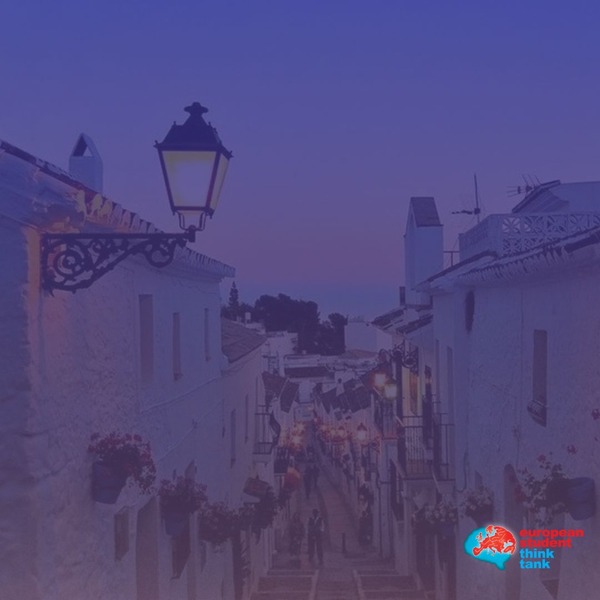
Written by: Semina Melissi
Edited by: Paul O’Brien
Introduction
Nowadays, the tourism industry contributes significantly as a source of employment generation while being intertwined with the economic and social well-being of communities. Despite its contribution to the global economy, incomes and employability, there’s a growing concern about its impact on the environment and the socio-cultural dynamics of each region. As post-Covid tourism recovery has surged around the world, the term over tourism seems now more relevant than ever. Numerous protests and social movements against over tourism have taken place in popular tourist destinations like ‘Turisme No Gràcies’ and ‘Tourism Kills’ in Barcelona, ‘Mallorca Without Tourists’ in Mallorca, ‘Save Venice’ in Venice and various anti-airbnb protests globally. The most frequently used term for unbalanced tourism growth is “over-tourism”. Ultimately, it is a result of tourism strategies that aim towards tourism growth (Peeters, P. et.al., 2018). Across the world, the increased politicisation of tourism due to inflation and loss in citizens’ purchasing power, financialisation of the housing market and rise of housing prices as well as increasing carbon emissions and the impact on the climate emergency are apparent. The touristification process of places, which lays the foundation for overtourism, does not only refer to the excess amount of visitors, but also the cause of much deeper consequences (Milano, 2024). Precisely, destinations facing overtourism experience social, environmental, economic and cultural issues such as pollution and deterioration of traditional values (Pham et.al., 2023). Consequently, concerns about the impacts of tourism growth have resulted in emerging plans about the concept of sustainable tourism, involving a variety of measures and stakeholders.
It is also important to stress the variety of aspects associated with sustainability and the subsequent challenges in developing indicators for sustainable tourism. According to the United Nations World Tourism Organisation (UNWTO), sustainable tourism development is defined as: “Tourism that takes full account of its current and future economic, social and environmental impacts, addressing the needs of visitors, the industry, the environment and host communities” (UNWTO, 2018). Debates suggest that measuring sustainable tourism functions takes on a crucial part for better management of destinations and the industry as a whole, as clear indicators simplify information for policymakers and enable evidence-based action (United Nations, 2007). On the other hand, scholars argue that the use of sustainability indicators in tourism are not common among decision makers, as traditional economic indicators still dominate (Torres-Delgado et.al., 2021). However, given the current anti-tourism waves in Europe, the social aspect is highlighted both by the media and the main affected stakeholders as a key factor for a sustainable and successful tourism ecosystem. Paradoxically, those who should be benefiting from the growth are the ones who pay the price for it, especially when it results in local displacement and marginalisation (World Economic Forum, 2023).
Impacts of unbalanced tourism growth on a European level
Firstly, it must be stressed that a clear definition of over tourism is not readily available. A rather complex, multi-dimension and most definitely not new phenomenon, overtourism is the result of tourist demand exceeding the capacity of the host destinations. According to the European Parliament’s Committee on Transport and Tourism (TRAN) study over tourism is defined as follows: “Overtourism describes the situation in which the impact of tourism, at certain times and in certain locations, exceeds physical, ecological, social, economic, psychological, and/or political capacity thresholds” (Peeters et al, 2018). UNWTO has also approached the phenomenon in a more subjective and qualitative aspect and describes it as “the impact of tourism on a destination, or parts thereof, that excessively influences perceived quality of life of citizens and/or quality of visitors experiences in a negative way” (UNWTO, 2018). The external factors that have led to the development of tourism in general, and the emergence of high tourism pressure distinctly in certain destinations can be found in demographic changes and new travel behaviour from the Millennial generation, economic growth, higher living standards, increased number of paid days off, technological advances, wider access to media and information and, last but not least, increased transport connectivity (McKinsey & Company, & World Travel & Tourism Council, 2017; Nilsson, 2020 ; Goodwin, 2017; Dodds & Butler, 2019). Besides the previously mentioned root causes, new trends such as social media, the prioritisation of leisure travel, new types of tourism or unpredictable events, often unrelated to tourism act as a cornerstone (European Commission et.al., 2022).
Likewise, the impacts of unbalanced tourism growth can be diverse and are affected by destination characteristics. They can generally be physical, environmental, (socio-)economic or socio-cultural (including psychological). The impacts themselves can be divided into five categories: the degradation of the local infrastructure (roads, ports, garbage, sewage treatment facilities), degradation of the natural environment (more pronounced in rural areas), imbalance in the local economy (pushing out traditional stores or professions), impacts on the social environment (citizens feeling disturbed by the presence of many tourists) and tourists themselves are negatively affected as the visitor experience is notably deteriorated (European Commission et.al., 2022). It is important to note that the experience of unbalanced tourism differs greatly based on the destination type, such as urban, rural, mountain, coastal and island destinations, and can be detected in certain neighbourhoods, historic town centres or coastal strips. According to the Amadeus European Travel Trends and Prospects for Q3 of 2024, the multiplier comparing 2019 and 2024 statistics was 4.9 for Barcelona, 7.0 for Paris, 7.5 for Amsterdam and 9.5 for Venice (Tourism Economics, 2024). The same prospects also reflect the increase in the tourism intensity from 2019 to 2024 for most destinations, while also demonstrating the unbalance in the tourism growth.
However, while a variety of stakeholders are involved according to each individual place, the local residents are always impacted. Such social impacts are especially visible in places like Mallorca or Iceland. The negative impacts on social sustainability are usually crowding, increased waste, nuisance, gentrification, exodus of residents and changing housing markets (Font et.al., 2021). On the other hand, the tourists themselves are also adversely affected by the downsides of an unbalanced tourism growth due to the crowds, as visitor experience is heavily deteriorated (traffic jams, waiting in lines and an overall feeling of an inauthentic experience) (European Commission et.al., 2022). Simultaneously, overtourism has been identified as the second largest deterrent, after cost, for a travel destination (Tourism Economics, 2024). What is more, the stakeholder consultation of the Transition Pathway for Tourism of the EU Commission and namely the Spanish Smart Destinations Network, highlighted the importance of the well-being of residents as vital for developing a more inclusive tourism ecosystem, contributing to long-term sustainability and resilience of destinations (Font et.al., 2021). Consequently, civil society is considered to be the main stakeholder affected by the negative impacts of the unbalanced tourism growth.
European Policy Frameworks
In order to address unbalanced tourism growth, numerous policy frameworks have been built, mainly through sustainability measures. Firstly, sustainable tourism has initially been described as “tourism which is developed and maintained in an area (community, environment) in such a manner and at such a scale that it remains viable over an infinite period and does not degrade or alter the environment (human and physical) in which it exists to such a degree that it prohibits the successful development and well-being of other activities and processes” (Butler R.W., 1999). The existing policy frameworks for this issue is mainly deployed by the European Commission and focuses on the sustainable transformation of EU tourism. First and foremost, the European Green Deal, which strives for the EU to become the first climate-neutral continent by 2050 has developed a set of proposals to make the EU a resource efficient and competitive economy. Notably, the Fit for 55 package, presented in July and December 2021, also aims to achieve climate neutrality by 2050 and a 55% reduction of net greenhouse gas emissions by 2030 (European Parliamentary Research Service, 2024). In the context of the European Green Deal, specific strategies like the Sustainable and Smart Mobility Strategy, the EU Biodiversity for 2030, the Long-term vision for rural areas and the Transforming the EU’s Blue economy for a sustainable future strategy are in operation.
In 2022, the Commission also welcomed the adoption of the European Tourism Agenda 2030 by the Council of the European Union, covering five main policy areas, the same as the ones in the Transition Pathway: green and digital transition, resilience and inclusion, skills and support, policy framework and governance models. Specifically, according to the ‘Council Conclusion on ‘European Agenda for Tourism 2030’, the Council recalled “[t]he competitiveness of the tourism sector as a driver for sustainable growth, jobs and social cohesion in the EU for the next decade” for the adoption of the paper (Council of the European Union, 2022). To be exact, in article 3, the Council of the EU underlines its determination to support sustainable tourism, and instrumental dimensions like environmental, economic, cultural and social sustainability, in accordance with the United Nations 2030 Agenda for Sustainable Development (Council of the European Union, 2022). Most importantly, under the priority area of resilience and inclusion and the topic of sustainable innovation in tourism services the Council invited the Commission and member states to innovate with sustainable and resilient tourism services that could have a positive impact on both the residents and local ways of life.
The updated EU industrial strategy in 2020 aimed for a green and digital transition of the entire EU industry ecosystems, including tourism. Namely, the Transition Pathway for Tourism, introduced by the Commission in February 2022, with the main priority areas being enabling policy framework and governance, green and digital transition, resilience and inclusion (European Commission, 2022). The green and digital transition, as one of the EU’s priorities, has played a vital role in this framework. To be more precise, as identified by the stakeholders, the green transition is directly linked to synergies with other ecosystems, like aerospace, agri-food, construction, culture industries, digitalisation, health and many more. What is more, the customer demand for more sustainable tourism, the digitalisation of tourism services and the integral role of SMEs are highlighted (European Commission, 2022). The need for research and innovation also includes circular tourism on various sectors across the ecosystem, like energy, food, hospitality, social innovation and governance models, that are able to support reliable local supply chains (European Commission, 2022). Finally, the Green Claims Directive, which allows for consumers to make accurate and better informed choices, and actually play a role in the ecological transition, sets out commitments to tackle false environmental claims and ‘green washing’ (European Commission, 2023c).
Overall, most sustainable policy frameworks include measures for smart tourism and social sustainability. To be exact, the Smart Tourism Initiative, rewards smart and sustainable tourism practices in European Cities. For this purpose, the European Commission has launched two competitions to promote smart and sustainable tourism in the EU, the European Capital of Smart Tourism and the European Green Pioneer of Smart Tourism (European Capitals of Smart Tourism, 2024). Their main purpose is to promote European tourism and increase the sharing of local tourism-related values. The European Destinations of Excellence (EDEN) initiative, also launched by the European Commission, highlights places that demonstrate outstanding sustainability practices, benefiting both the environment and local communities (European Commission, 2023a). The social aspect is also highlighted in the Transition Pathway for Tourism, as it is important that tourism provides economic support for the destinations, as long as it does not cause harm to nature, the local environment, or the social and cultural wellbeing of the local residents (European Commission, 2022). Given the fact that such impacts would reduce the attractiveness of the destination long term, the endurance of the environmental and cultural authenticity occupies a central role in maintaining the competitiveness and only achievable through ensuring the well-being of residents (European Commission, 2022).
Conclusion
To summarise, overtourism and its negative social impact, especially to the well-being of residents, requires a comprehensive and cohesive smart tourism strategy, with a focus on data utilisation and AI-driven tools to better manage tourist flows and ameliorate locals’ quality of life. Additionally, fostering cross-industry collaboration between the tourism sector as well as public and private stakeholders will help mitigate the negative impacts of unbalanced tourism growth. The EU’s existing frameworks, such as the European Green Deal, the European Tourism Agenda 2030, the Transition pathway for Tourism and various respective initiatives, have introduced smart and innovative tourism strategies with respect to the local community. Given the fact that long-term sustainability is a core driver of competitiveness, supporting policy frameworks that prioritise social sustainability without compromising resilience serves a pivotal function to ensure a unified and competitive European tourism sector.
References
Tourism Economics. (2024). European Tourism: Trends & Prospects Quarterly Report (Q3/2024) (European Travel Commission, Ed.; pp. 20–22) [Review of European Tourism: Trends & Prospects Quarterly Report (Q3/2024)]. European Travel Commission. https://etc-corporate.org/uploads/2024/10/ETC-Quarterly-Report-Q3-2024_public.pdf
Booking.com. (2024). Sustainable Travel Report 2024. Retrieved from https://news.booking.com/download/aecf3f81-73df-42eb-a8a1-f4bdc8809af4/booking.comsustainabletravelreport2024.pdf
Butler, R. W. (1999). Sustainable tourism: A state-of-the-art review. Tourism Geographies, 1(1), 7–25. http://doi.org/10.1080/14616689908721291
Milano, C., Novelli, M. & Russo, A. P. (2024): Anti-tourism activism and the inconvenient truths about mass tourism, touristification and overtourism, Tourism Geographies, DOI: 10.1080/14616688.2024.2391388
Council of the European Union. (2022). Document 15441/22 INIT. Retrieved from https://data.consilium.europa.eu/doc/document/ST-15441-2022-INIT/en/pdf
Dodds, R., & Butler, R. W. (2019b). The enablers of overtourism. In Overtourism: Issues, realities and solutions (pp. 6–22). De Gruyter Oldenbourg. https://www.degruyter.com/document/doi/10.1515/9783110607369-002/html
European Capitals of Smart Tourism. (2024). Homepage. Retrieved from https://smart-tourism-capital.ec.europa.eu/index_en
European Commission: European Innovation Council and SMEs Executive Agency, Strasdas, W., Lund-Durlacher, D., Wolf-Gorny, L., Schuh, B., Badouix, M., Gaugitsch, R., Gorny, H., Münch, A., Weber, F., Priskin, J., Wyss, M., Brkanovic, S., Eggli, F., & Hat, K. (2022). Unbalanced tourism growth at destination level : root causes, impacts, existing solutions and good practices : final report, Publications Office of the European Union. https://data.europa.eu/doi/10.2826/782120
European Commission. (2022). Transition pathway for tourism. European Commission. https://ec.europa.eu/info/publications/transition-pathway-tourism_en
European Commission. (2023a). EDEN current destinations. European Commission. Retrieved November 25, 2024, from https://single-market-economy.ec.europa.eu/sectors/tourism/awards-and-outreach-activities/eden/current-destinations_en
European Commission. (2023b). Eurobarometer Survey on Attitudes of Europeans towards tourism. Retrieved from https://europa.eu/eurobarometer/surveys/detail/2283
European Commission. (2023c). Proposal for a Regulation on substantiation and communication of explicit environmental claims (Green Claims Directive). Retrieved from https://eur-lex.europa.eu/legal-content/EN/TXT/PDF/?uri=CELEX:52023PC0166
European Commission: European Innovation Council and SMEs Executive Agency. (2024). Crisis management and governance in tourism. Publications Office of the European Union. https://data.europa.eu/doi/10.2826/55067.
Centre for Sustainable Development (ZENAT), Intellera Consulting Spa (Intellera), European Commission, Directorate General for Internal Market, Industry, Entrepreneurship and SMEs (DG GROW). (2024) “Sustainable EU Tourism – Shaping the Tourism of Tomorrow.” European Commission. Retrieved from: https://single-market-economy.ec.europa.eu/sectors/tourism/eu-tourism-transition/sustainable-eu-tourism-shaping-tourism-tomorrow_en
European Committee of the Regions: Commission for Natural Resources, Marcinkowska, I., Maj, A., & Sidło, K. (2024). Tourism and rural development, European Committee of the Regions. https://data.europa.eu/doi/10.2863/099682
European Parliamentary Research Service. (2024). Fit for 55 package. European Parliamentary Think Tank. Retrieved from https://epthinktank.eu/2024/08/01/fit-for-55-package/
Font, X., Crabolu, G., Neuhofer, B., Koens, K. (2021) European Tourism Transition Pathway 2030. Workshop Report Intermediary Deliverable. Prepared for the European Commission. 16 November 2021.
Goodwin, H. (2017). The Challenge of Overtourism. https://haroldgoodwin.info/wpcontent/uploads/2020/08/rtpwp4overtourism012017.pdf
Intellera Consulting Spa, Scholz & Friends, Center for Sustainable Tourism at Eberswalde University for Sustainable Development, AnySolution, Baltic Media. (2024) Supporting sustainability and resilience of EU tourism destinations. Intellera Consulting
Kim Pham, Kathleen L. Andereck & Christine A. Vogt (2023): Stakeholders’ involvement in an evidence-based sustainable tourism plan, Journal of Sustainable Tourism, DOI: 10.1080/09669582.2023.2259117
McKinsey & Company, & World Travel & Tourism Council. (2017). Coping with success: Managing overcrowding in tourism destinations. https://www.gstcouncil.org/copingsuccess-managing-overcrowding-tourism-destinations-mckinsey-wttc/
Nilsson, J. H. (2020). Conceptualising and contextualising overtourism: The dynamics of accelerating urban tourism. International Journal of Tourism Cities, 6(4), 657–671. https://doi.org/10.1108/IJTC-08-2019-0117
Peeters, P., Gössling, S., Klijs, J., Milano, C., Novelli, M., Dijkmans, C., Eijgelaar, E., Hartman, S., Heslinga, J., Isaac, R., Mitas, O., Moretti, S., Nawijn, J., Papp, B., & Postma, A. (2018). Research for TRAN Committee – Overtourism: Impact and possible policy responses. European Parliament, Policy Department for Structural and Cohesion Policies.
Slow Food Travel. (2024). Slow food travel. Retrieved from:https://www.slowfood.travel/de
Torres-Delgado, A., López Palomeque, F., Elorrieta Sanz, Berezi., & Font Urgell, Xavier. (2021). Monitoring sustainable management in local tourist destinations: performance, drivers and barriers. Journal of Sustainable Tourism, 31(7), 1672–1693. https://doi.org/10.1080/09669582.2021.1937190
United Nations. (2007). Indicators of sustainable development: Guidelines and methodologies. https://doi.org/10.1201/b13145-22
UNWTO, Centre of Expertise Leisure, Tourism & Hospitality, NHTV Breda University of Applied Sciences, & NHL Stenden University of Applied Sciences. (2018). ‘Overtourism’? Understanding and managing urban tourism growth beyond perceptions. UNWTO. DOI: https://doi.org/10.18111/9789284420070
World Economic Forum. (2023). What is overtourism and how can we overcome it? Retrieved from https://www.weforum.org/agenda/2023/10/what-is-overtourism-and-how-can-we-overcome-it/
World Tourism Organization. (n.d.). Sustainable development. Retrieved [2024], from https://www.unwto.org/sustainable-development

 The ’Ndrangheta’s Infiltration and Threat to European Institutions
The ’Ndrangheta’s Infiltration and Threat to European Institutions  From Paper to Practice: How Grassroots Norms Undermine Gender Rights in Pakistan
From Paper to Practice: How Grassroots Norms Undermine Gender Rights in Pakistan  Exploited Childhoods: The Role of Global Corporations in Perpetuating and Mitigating Child Labour
Exploited Childhoods: The Role of Global Corporations in Perpetuating and Mitigating Child Labour  Human Rights Challenges in Addressing SLAPPs in Media, NGOs and Journalism in the EU
Human Rights Challenges in Addressing SLAPPs in Media, NGOs and Journalism in the EU 


